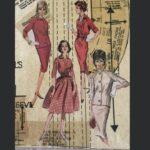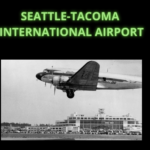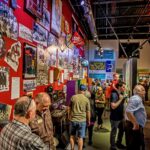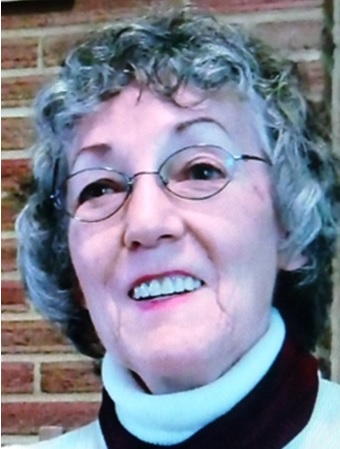Interview with Barbara Reamer
2011 July 25
at her home in Burien
Interviewer Barbara McMichael
BM: First of all, tell me a little bit about your parents.
BR: My parents married during the depression. They moved a lot, times that I don’t remember at all, of course, I was a baby. My brother was born a year after I was. So we lived in Seattle and Sequim, and a place in California I don’t even remember. All the while parents looking for jobs.
BM: What sorts of work did your folks do?
BR: My father worked as a clerk in a drugstore, the first that I knew about, here in Seattle. Then they moved to Bremerton for a while where his brother owned a drugstore. Then they moved to Sequim where he opened another one. Things didn’t work out, I guess. I know very little about that part of it. Then we moved back to Anacortes where my mother grew up, or at least from her teenage years. We lived there because her family was there. I’m not sure what all he did there. But I know during the late depression they went hunting rabbits. He always helped when a farmer had laying hens who weren’t laying anymore. He’d offer to help the farmer butcher the chickens and then bring some home. Then my mother would can them. Can you imagine canning chicken? Of course, they fished, picked berries and all that sort of thing.
But then when the war started my dad came to Seattle to get a job at Boeing. Everybody got a job at Boeing. As soon as he was settled and found an apartment, my mother and her two babies moved to Seattle. We lived in an apartment in Seattle during the war.
BM: Tell me when you were born?
BR: 1936. I don’t know exactly when we moved to Seattle, 1940, maybe 1941.
BM: So you started school in Seattle.
BR: Yes. In Ballard. We lived in Ballard. My dad grew up in eastern Washington and was used to farming, in a farm community and loved gardening. Even when we lived in Ballard there was a Victory Garden. I have very vague memories of living in Ballard. But he got to garden and that was his things. Of course he grew vegetables for us.
But he wanted to move out to the country. So when they were able to buy a car, we went driving and we drove way out to Burien. It was out in the country. They looked at property and they bought a big old farm house in Seahurst for $7500. And that’s where I grew up.
BM: On some acreage?
BR: No, half an acre. By that time they were all divided up. But supposedly it was the original farmhouse in a big orchard just above Lake Burien. The address was on 18th SW between Lake Burien and Lake Burien School. That’s where I grew up for most of my memories until adulthood. And now I live barely a mile from there.
BM: What do you remember about your school days in Burien?
BR: I know we came home for lunch because it was a block away. I didn’t like school lunches. We could hear – there were always two bells. There was the first bell that rang, and then there was a tardy bell. We could hear the first bell and run like mad and get back to school before the tardy bell rang. The playground, I don’t have really specific memories. I know there is a famous picture. Was it Life Magazine? Somebody took a picture with all of the kids in Lake Burien School lined up in front or peering out windows.
I remember the earthquake of ’49, 6th grade. We were in school and everything was shaking. It was the first time I’d ever experience anything like that. I don’t have real specific memories, but there are a lot of rumors. Everyone had to go outside of course. There was no real damage that I’m aware of at our school. I know there were giant cracks somewhere. But the school, nothing came down, nothing was serious.
BM: So the response at that time was, if there was an earthquake, it wasn’t duck and cover, it was go outside?
BR: Probably not. I don’t remember living through it specifically like we do now with the few we’ve had here. There were rumors that at Highline some teacher had jumped out a window and left his class. I have no idea. I know that rumor was spreading around.
One of the best memories about Burien, is that people knew each other and there was nothing much going on. The high school football team was a big deal. Everyone went to the games. The basketball games and the football games. My father knew a lot of people. One of his friends at Boeing, he worked with, his daughter lived up the street from us and she was a cheerleader. So I know these names even though I didn’t know them as people. Oh my gosh, when there was a championship or something there was a parade in Burien with the team on a fire truck, all that sort of thing. The Kiwanis festival, the carnival, all the old-fashioned small town things you remember were fun. It was always fun.
BM: Was there junior high then?
BR: Puget Sound Junior High was built while I was in school and my brother and I did go to Puget Sound Junior High.
BM: Let’s acknowledge your brother, your younger brother.
BR: I have only one sibling, my brother Al who is a year younger than I. He lives in Vancouver, WA. We grew up here together and we’re good friends. Once he got a car when he was 16, not all boys had cars in those days. Bunches of us all went places together. Like he would drive us all to the football games and things like that. High school was more fun. I was never crazy about school. I was not the social type, the cheerleader, Girls Club, type. I was interested in art and music.
BM: So tell me about high school.
BR: Highline was great. Probably primarily because of Bill Moeller. It may have been his first job there. I wasn’t that aware of it, but there was always something called the Senior Variety Hour. It was just a talent show kind of thing they put on every year. He was a new teacher there with a musical background, so he was in charge of it. He said “We’re going to really make this a show.” This was the beginning of what later turned out to be Hi-Liners. It was a really great big show.
BM: Do you remember a theme or anything?
BR: Oh my goodness, yes. Broadway, Hollywood theme. There were scenes and he did Broadway numbers. There was a Down South number. Marilyn Culton has more information. That’s when I met Marilyn Culton. She was the choreographer. She was a friend and she came in and the big deal was that they took football players and taught them how to dance. They had chorus lines, they had kids learning to dance. In those days everybody didn’t dance. There weren’t all these lessons like everyone does now. There were like two kids in high school who were dancers, who took lessons. Three maybe. They all had little solos in the show. My thing was mostly chorus. I never did anything on my own. I still don’t. I never liked being on stage unless I was in a chorus. But I was a singer. I’d sung in choruses from 4th grade on.
BM: Can I ask you to describe the venue where you performed?
BR: Oh, Highline, the old theater. It was great because schools don’t have these any more. It was right in the center of the school. The old theater was built like a theater with sloping floor, wooden seats that folded up, and a balcony up above. The total size – I think it was just under 1000 kids counting the balcony, all the seats in the balcony. They had a projection room up at the back, just like a normal theater. The stage was a normal proscenium stage with space for orchestra in front. Curtains, what we call fly space in the back. There was a pin rail. Oh, it was fun to work on stage. My brother was on the stage crew. All the curtains went way up maybe 40 feet up high and they were all fastened with ropes and then ropes came down to a pin rail, they called it a pin rail, that had actual pins a little like rigging on a ship and they would wrap the cords around those to hold on to the curtains. The kids would have to work on this pin rail which was maybe ten feet high off the stage floor. They would be up there and they would have to lower and raise the curtains on cue by tying them and untying them and all that. It was very complicated, but that’s how old theater was.
BM: The lights too, I imagine.
BR: The lights, yes. I don’t know how much equipment they had at that time. But they had the spotlights or might have got them later.
BM: Did Highline have a band or orchestra at that time?
BR: Oh my goodness, yes. I miss the old days. They did up until the ’70’s when too many levies failed. There was a beginning band, an advanced band, and there was a full orchestra. There was the pep band, the choir. There was beginning choir – women’s choir. You had to start in the women’s choir, which I did. Then you had to audition for the performing or the concert choir. There must have been a men’s chorus as well. Then there were the special groups, the small ensembles.
BM: So, in addition to those extra-curricular activities, tell me about others things you did, when your brother drove you places. Tell me about the theater or where you went. What did you do for a social life?
BR: Well, because of our area at that time Highline was the only high school from the Seattle limits in White Center down to Federal Way. So the football league, basketball, the league where we all played each other included Renton, Kent, Auburn, Enumclaw, maybe Sumner. Federal Way had its own district. So we were driving in the fog and rain to all these places way across the valley. I remember one football game where it was snowing. It actually started snowing during the game and the ground was white. Not heavy snow. But they played the game and of course everyone was muddy. I remember another game where driving home there was so much fog in the valley. My brother had a car full and I remember one boy getting out and walking along the shoulder so the car could drive and not run off the road.
BM: It gets to be real pea-soup down in the valley.
BR: If parents had known that they probably wouldn’t have let us do that.
BM: Did the stadium look like it does today? Were there two sides?
BR: No, there was just some open bleachers on the south side. The north side did have covered bleachers. They just had the mud track that they always had. Oh, I remember a teacher. Harry Lemon. He was my favorite teacher, the music teacher and he also taught botany, I believe. He was a Waskowitz counselor. He was very famous. He was an excellent choral director. It was like having private music lessons. I learned so much about music and about singing properly from Mr. Lemon. He directed little musicals. The first one that I was in was some silly little operetta. But I remember being in the chorus and that was great fun. That was my first introduction to some kind of theater, other than just a children’s chorus at elementary school.
Then when Bill Moeller came along and started these variety hours, I sang in choruses but I never got involved in anything like drama club. I was on makeup committee. I did makeup, but I would not be in a play because I didn’t want to do that. So there were a lot of shows and it all started at Highline. It was so much fun.
BM: What did you do after high school, once you graduated?
BR: I became very interested, television was new and I thought I wanted to do that in a theatrical way. I would like to get involved in live television. Somebody had to find props and costumes and sets and I thought that sounded like fun. There was something called Columbia School of Broadcasting, which probably doesn’t even exist now. But it was a new thing.
BM: Where was that? Was it in Seattle?
BR: It was actually in Portland. They had a correspondence course that you started to begin with that I could do. Which I did. You got stuff in the mail, you got the books, you did all the research and wrote the papers and all of that for the first year, which is basically learning the concept of television and how it works. The idea was the second year to go to the school and go from there. It got more complicated. It was really fun at first and I liked the writing parts. But when it got more complicated I said, “I don’t understand the concept of television.” You had to be able to describe how it works, how the signals come thought the air and get converted into a picture. And I didn’t get it. So I started calling television stations to see if they had any job openings. The old thing, I’ll start in the mailroom deal, you know? I kept calling and one person at KOMO was really nice to me and he kept saying, call in another week or two. And so I did. I kept calling and at some point, yes, there is an opening in the mailroom. I went down and I got the job. I’d had other little part time jobs, but this was right out of high school. I was 18 or 19. So I worked there and at some point someone upstairs, it was a very simple building then. In another department somebody’s husband got transferred and they had to leave on a week’s notice. They’d been advertising and couldn’t find a replacement. So they looked at my resume and saw that I was attending this school and came up and had me do a lot of stuff and that. So I ended up being their radio promotion writer. At this point, I wasn’t writing commercials. I was writing promotion spots and just doing a lot of stuff as an assistant to the promotion director. The whole KOMO radio and television were in the same building at that point. Several of the same people were involved.
BM: So, how long were you at KOMO?
BR: Three years, maybe. I’m not sure. I don’t remember. In the meantime, I got married and when I was pregnant I quit half way through my pregnancy.
BM: How did you meet your husband?
BR: Oh, well. That was another story. I was working at KOMO then. I was actually sort of engaged to a guy who was in the Army and nobody knew about it. I didn’t want to go out with anyone else and I was bored and needed to do something. So I saw the deal about the new theater group. They had been doing plays and my Mother and I went to see a show one night.
BM: Now this was in Burien.
BR: In Burien.
BM: So describe that a little bit. There was a story in the Highline Times.
BR: Oh in the beginning yes. I didn’t pay that much attention. In the beginning there was an article in the Highline Times saying a bunch of people wanted to start a community theater group if there was enough interest. There apparently was and a group was formed. It was a year or two later that I decided to go see a play. Then again there was an announcement in the Highline Times about the play. So I went to see a play and it was fun. Then I went to see a second play. Then just started talking at intermission to one of the members of the cast, the guy who took tickets probably and said I had an interest. Oh my gosh, he welcomed me with open arms. “We’d love to have you join us. This is what we’ll do and give me your phone number.” Then I sort of forgot about it. About two months later someone called me and said, “This is what we need. Can you come and help us work with props backstage?” I said, “Sure.” There was this play they were doing and there was this really great handsome leading man. He was very attractive and his name was Al Reamer. So I stayed with the theater group for quite a while.
Meanwhile the Army guy came and went. Theater was the deal. I spent all my time. It was fun at that point. I was the youngest one there probably. It was mostly teachers, school people. I think the group was started by a bunch of Highline area teachers, a couple of librarians. Three or four of them had all come from Western Washington and about the same time and joined the Highline School District. My husband and two or three of the others were members of this group. So there were librarians and teachers and tech people.
BM: Which plays do you remember as favorites?
BR: Favorites – oh gosh. My husband and I became best friends, were really just buddies. Everything we did was about meetings or rehearsals or plays. We were doing the play “Macbeth”. It was probably the first Shakespeare in Burien. It was an adapted, edited version. It was during that play that I actually realized I was in love with him, other than just being a best friend. He didn’t know yet. So that play stands out in memory.
There were so many plays, other favorites would have to go way down the line many more years. They were favorites for various reasons because they were difficult to do or particularly fun. There were big musicals that were almost impossible to do but believe it or not we had an orchestra of 15 people or more, and a cast of 20 on a small stage. Just a lot of fun but the best part about the group at that time in the 60’s and 70’s is that it was families. A lot of families. It usually started out with women joining the group and then their husbands would get involved because that was the only way to see their wife or because they had a special expertise and were prevailed upon. One wife was a school secretary I think, and her husband worked for Bell Telephone at that point. So he was a techie and he got on board. Someone else’s husband was a Boeing engineer in designs, he got on board. Just like that. So the kids grew up as mine did, in the theater group. I remember sneaking into a rehearsal in the back and whispering to my husband that Yes, I was indeed pregnant, when we were all in rehearsal. He was quite joyous and interrupted the rehearsal.
BM: Now let’s back up. What year did you get married?
BR: 1959. And that was also the year that my husband and another member of the group had written an original musical around the schools. They always used to say “write what you know.” And they wrote a musical comedy about a school and the teachers. It was early in 1959.
BM: Was Al a teacher?
BR: Yes. His entire career. At that time is wasn’t difficult to get a job. I guess there were more schools than there were teachers. Recruiters from the Highline School District went up to Western Washington University and signed people from the Senior class on the spot.
BM: Was that Bill and Peggy Hunt also who came down from Western Washington?
BR: No, they weren’t teachers. The ones who were teachers at that time, well, I remember Don Wallace, Al Reamer, of course. Dick Dye, who was very well known in Highline School District, he was an arts educator, as well as an elementary school teacher. Two or three others, I can’t remember their names right now. I think it was 4 or 5 that were all hired out of that same Senior class and came right to work at Highline in September and spent the rest of their careers in the Highline School District.
BM: So where did Al teach?
BR: He started at Normandy Park Elementary, which is now Normandy Park City Hall. Then he moved from there to Marvista Elementary. We were married and had a couple of children and at some point there was one of those summer programs. It was a completely paid summer course up at Western and so we moved back. He was from Bellingham. He grew up in Bellingham and all his family was there. So we moved to Bellingham for the summer with 3 small children and lived in a little summer kind of cabin that his father had found for us while he was going to the summer course that was completely paid. That was great because any classes you get you get a little bit more money.
While he was there we were just getting ready to move back to Burien, one of his professors came to him and says, “We have a special program starting in September. It’s a master’s degree program, but it’s very unique, it’s its own special program. It has to have 16 people, it’s all set up and one of the guys got sick and dropped out and I’m inviting you to be that last person. It’s completely paid, your books, and tuition, everything is paid and you get a monthly stipend for living expenses. And you get a master’s degree.” But, he said, “It’s a very intense program, very difficult to do and we want you all to work together because you’re not going to be integrated with the rest of the school. It’s its own program.” So we did. It was quite a decision to make. It was difficult, but we did. We rented the little house we had in Burien and we lived there for a year. We had to find our own apartment and live there with our 3 small children. We lived there for that one year and he got his master’s degree.
Then it was specializing in literature, the English department, and Puget Sound Jr. High decided they needed him. They weren’t going to spend all that time and money on a lit specialist for elementary schools. He was at Puget Sound Jr. High for several years.
Then, by that time, our oldest daughter was at Highline, her first year at Highline High School. She came home from school one day and said, “The drama teacher just told us that she is retiring at the end of the year and her job will be available. But she hasn’t announced it yet and nobody knows.” So he kept track and as soon as it was posted he went right away and applied. Of course, lit, drama, there are so many of those teachers. But the one thing that they said is “What we need is someone to teach the yearbook class and do the school yearbook. We can’t find anyone. That’s sort of an English department thing and if you will do that you’ve got the job.” He said “Sure! Why not.” That’s a whole other story. But anyway, he went to Highline and he spent the last of his career at Highline High School, where his 3 daughters also went to school. He enjoyed his classes.
BM: Let’s talk about those daughters for a minute. Tell me their names.
BR: Ok. Grace, Annie, and Jane. Grace and Ann were born 13 months apart. Then Jane several years later. So Grace and Annie were very much like twins. At that time we lived on 154th Street, north of the airport. Of course that property is no longer there, it’s runway. We were quite concerned about where our children would go to school and a member of this theater group, we were still very involved in the theater. One of them was the principal of Gregory Heights Elementary School. We liked her ideas, the things she did and the things she said.
BM: What was her name?
BR: Catherine White. She was a great teacher and a great principal, and a good director of the theater group. So we started looking at property in that service area so we could have our kids go to Gregory Heights. Of course, Gregory Heights borders on the water, which is expensive so we got the best property we could find at that time so we could go to Gregory Heights. So our children did indeed go to Gregory Heights School. Cathy was principal, but at that time the concept for Valley View Elementary was coming to mind. It was the first time, I believe where they got a principal involved in the design and the concept of building the school. So the next year she went on to Valley View. She was only there one year. Gregory Heights was always an excellent school and still is as I understand it.
BM: So, you moved to this home where you’re living now.
BR: It was actually a smaller house on the other side, over on 15th and the other side of Gregory Heights. Then we went from there to Bellingham for that Master’s degree program, and then came back. We were in a small house with 3 children and it was very obvious that wasn’t going to work. We had planned to build but that was too expensive. So we started looking and the house I’m in now was on the market. It was empty so we could move in immediately if we could pull it all together. We managed to do that. That was in 1968. Our youngest daughter was 2. It’s the only house she remembers living in.
BM: The address is 16712 21st SW.
BR: And I’ve been here since 1968, so that’s a pretty long time.
BM: Barbara, I’m going to swivel this camera around and we’re going to look at this one big tree out in your yard and I’d like you to tell me about this one big tree that you remember.
BR: Where I grew up in Seahurst on 18th Avenue, my father worked at Boeing. His hobby was gardening and he specifically liked rhododendrons and evergreens. He grew them and then he began hybridizing them. Growing different things, growing something that didn’t grow easily was a challenge and he loved it. Every time we went on a trip or a vacation he would pick up seeds or cones or something. At some point when we were in California near the Mount Shasta area, he got some Redwood cones and he planted the seeds and was able to grow Redwood trees. I don’t know how many there were. But I know there are some others around Burien, I have no way of knowing. I didn’t pay attention to that sort of thing. I was a young mother at that point. Later when he was growing all these things. When we moved into this house now on 21st, it was mostly bare grass and we put in a garden. Because of my father’s business, he had retired and it was a nursery business. My husband dug up the garden spaces and he brought a truck load over and we had an instant garden. Rhododendrons and evergreens. And we got one of his Redwood trees, which at that point was about two years old and about two feet high. We planted it in the back yard. The house has a daylight basement thing where they scraped all the dirt up to build a two level house. What the back yard is is grass on top of rock, apparently. We had to put in a lot of dirt. This Redwood tree took a bit of time to dig the hole and get it planted. And then it didn’t die, but it didn’t grow noticeably for years. Seems like two or three years before it was really starting to grow. So it was apparently fighting its way through that hardpan.
BM: Well, it’s very happy now.
BR: I don’t know how tall it is, forty feet maybe? Since 1968.
BM: I bet it’s taller than that.
BR: Well, it’s 40 years old, it’s more than 40 years old.
BM: Also, talk a little bit about the rhododendrons.
BR: My dad really loved rhododendrons and at the house over on 18th he had a half acre and he grew a lot of things there. Of course, we had gardens when we were children. Grew everything we could eat.
BM: What was the address on 18th?
BR: 14964 18th SW and it has a lovely family still there that bought the house from my parents. He started growing rhododendrons, became very interested in them and studied them and figured out how to reproduce them. There are 3 different ways and he would make cuttings. In order to hybridize you have to work with a brush and get the pollen from one plant to another plant. Then collect seed, mostly you take the seeds off – you don’t let rhododendrons go to seed. Whatever, I don’t know all the details. Then you have to let the seedlings grow. You don’t know what you’re going to get because they’re not going to bloom for two or three years. So it took a very long time. Then he thought he would see if he could get them officially registered with the rhododendron association. And again, this took over about ten years. You had to prove that yours was indeed different from any other that existed which was amazing. He was able, over the period of many years. He has five hybridized with his names on them.
BM: That was by your dad, Edwin Weber.
BR: The two rhodies that are now available at places like Whitney Garden over on the peninsula. One is called Abe Arnott, which is named for my uncle, and that is an award winner. Another, Edwin O. Weber, and another Ruth A. Weber, which is my mother’s. I don’t know how widely those are available. The Abe Arnott is very popular and widely available. So that’s kind of fun.
BM: We’re going to kind of change course here a bit. I know that you’ve been involved in the art scene in Burien for many years, a number of different enterprises. Would you tell us a little bit about what you did? I know there was a fabulous art show, way back when. Can you discuss . . .
BR: Oh my goodness, I wish I had some more information here. I have so many file boxes in the basement. We worked in the theater group. It was Al’s, I guess you’d call it hobby, but he spent more time on that, I swear, than he did at his job, actually. So he was teaching, he would come home and either go to rehearsals, auditions, direction or designing and building sets and costumes.
BM: You know what we should do is maybe show this scrapbook you have for just a second.
BR: Oh …
BM: Just the first page.
BR: Well, first an article in the Highline Times 1955, calling together anyone interested in a community theater group. I wasn’t involved at that time. It was way before I got involved.
BM: Somebody put together the scrapbook with cartoons.
BR: Somebody put together the scrapbook. The first group were mostly teachers. Some of them were actually writing little plays, working with children in schools and they wanted a place to perform. They did some plays at the log cabin in Burien. Do you know where the log cabin is?
BM: No.
BR: The log house.
BM: Oh, yes.
BR: It’s been there forever. It’s on Ambaum.
BM: Yep.
BR: They did their first shows there. Then they started doing them at Chelsea Park Elementary School, which is now, of course, the parks department. So we had to rent a school in order to put on a play. I say we because I joined in 1958. They had to rent a school to put on a play and so that meant the whole time they had to build sets and costumes outside, bring them in, take over the stage, use it and be done. So they just did a few shows. We did them at Chelsea Park Elementary because the principal was a member of the group and that made it a little easier. We also worked up at, is it called Burien Heights, where they’re building the new mental health center on 136th. Another teacher was at that school at that time. We rented schools as they were available and as we saw how it would work out. We put plays on at Sylvester; we used Evergreen High School. Once we were at Sunnydale, I believe. Most of the time we were at Chelsea Park just because we were familiar with it. It was a very small stage but we did marvelous things there. Since it became the community center and became Burien Little Theater they’ve enlarged the stage. They’ve built it out and done a lot more things so there’s more space there.
1965, and this should be all on record somewhere. Highline Times was a big paper then and they had a women’s editor, would you believe, on the staff. Lettie Gudmestad who lived in Normandy Park, was the women’s editor and she became a friend and I wrote promotion stories. That was another thing from my training at KOMO, I wrote promotion stories for the theater group and took them to her. At some point during the summer as I understand it, early in 1965 Lettie had gone to an art show somewhere, possibly Vashon Island, and said, “We have a lot of art and artists in Burien. Why don’t we have an art festival?” And she put an article in the Highline Times and got some interest and said, “But we’re not just going to have an art show, we’re going to have all the arts. We’re going to have theater and dance and music”. They had this huge committee of women, one of them being Dottie Harper. Somewhere there’s a list. They put together an arts festival in about two month’s time. It was the kind you read about and hear about. They had receptions, they had a chairman, they had categories, you know, fine art, photography, crafts. It was all women. And the paper will show you it was Mrs. someone, they didn’t use women’s first names at that time.
BM: Where was this show held?
BR: Where – good question. My husband was the only man on the committee. They got him involved because of the theater group and music. They were building what we called the 400 building on 4th and 152nd, which is now where the library is. It was a flat roofed big building. It was a bank building at that time, with other shops in the back half of it. It went all the way back on 4th Avenue, many small shops, and they were not all occupied at that time. They had the building all built, but it wasn’t furnished. The reception was held there. The art was hung there in the bank. The space we used for the plays, because we were going to put on a play for them, was a gravel floor. They didn’t have it finished. We asked all the theater members and anyone else, to bring rugs and bring chairs. We set up a little space and did a play there. Al decided to do a play and he found something quickly and lined up a cast and directed the play “All Winged Victory” which was a very good moralistic story. We put on the play which was 1965, in this partly completed building. The we had someone else going on at that time, Delphine McDade had a ballet school in Seahurst. All the little girls went to ballet school. She had some dancers there and did a little performance at the judges opening reception. and patron’s reception, a nice party. Oh my gosh, what else. I don’t know, just a lot of other stuff. Musical things.
BM: This kind of became the forerunner. . .
BR: This was the Burien Arts Festival in 1965, the first one. Then people wanted this so much. I’m not sure if there was a Seahurst Gallery at that time or not. There was not a Burien Art Gallery. They opened in one of the little empty spaces in the back of this bank building, not yet leased when it was finished. They opened what they called The Festival Shop. They had art work there. Dottie Harper ran it – it was her thing. They had arts and crafts and they had them for sale in this festival shop. It was there for quite awhile until the building was finally leased. Then Vince Varacalli got them space for the new festival shop and it moved down to Ambaum and 4th, where Ambaum goes around the curve. So it was there for quite a while.
BM: Who displayed there?
BR: Oh, gosh. I’d have to find file folders. Then for the next two or three years this was a very big deal. I think the next year it was either at Sylvester or at Highline, which obviously worked a lot better. The adjudicators for the shows, because it was a competition and there were cash prizes, were people like Sudakawa in Washington. I’d have to find names, I don’t remember. But it’s all, I’m sure the Historical Society has files.
BM: I do remember that you said there was one name that we would recognize
BR: Oh yes! It was a wall hanging I believe, it wasn’t glass at all, but somebody won a prize, whether or not it was first prize or second I’m not sure. But he was an art student from the U named Dale Chihuly. There are stories in the Highline Times about that.
BM: So Burien gave him his boost.
BR: I think that was when it was at Highline. Oh and another name, Larry Zion was a potter we met at that time and he became quite well known. They sold his pottery at the Burien Art Gallery for a long time. We have many pieces here. He died long since. That was the best part about this festival too. They had working artist there. Betty, what was her name? She used to make quick little pictures of birds by using sponges. She’d get a sponge and paint, browns and grays and that, and put the sponge on paper and it would make a little fuzzy dot. Then she’d draw beaks and heads and legs on it. Wonderful little birds.
So all these people were demonstrating at this arts festival. Larry Zion and others had pottery wheels going. It was the first time I remember our small children saw pottery wheels and how it worked. This was, however, a big festival. One year there was what they called “The Composer’s Concert” that Al put together with Burien people who had written songs. There was music and dance. There was a little opera. Dora Mason was involved, Dora Stoner at that time, had a little opera that she put together, a short one act opera.
BM: Did you sing in it?
BR: No, no. It didn’t have a chorus. It was just soloists. I think it’s called
“Game of Cards”. There was dance, there was a lot of great stuff. It was mostly local, mostly local people. We have file folders with all those things in them.
BM: Because your daughters were involved in Seahurst ballet, can you talk about that just a little bit?
BR: Well, again, any time our family got involved it was a whole family event. Our oldest daughter had seen ballet on television when she was very small and so enthralled that she wanted to do that and kept that strongly. So we met Delphine McDade in Seahurst who had a little ballet school there. She was very strict and I loved her principal. She said, “Starting school at age 6 is enough of a problem for children and adapting, that I don’t take them until they’re 7. They need to have had that under their belt.” Learning how to follow directions and that. So our daughters started when they were 7 and 8. They took ballet. Of course, it’s a whole year long of lessons. Then at the end of the year she put on a big show. It was a storybook, famous fairy tale adapted to a ballet.
BM: She choreographed it?
BR: She did the whole thing. Her husband helped build sets or put sets together. She had sons growing up who were getting involved in theater. But, my husband, now also being a designer as well as an actor-director talked to her about costumes and she talked to him about what she wanted to do. For instance a ballet that would involve butterflies and flowers and vegetables and whatever. He said “I can make those costumes.” He did some pictures and designed them and yes, our girls in their first ballet, they were strawberries.
BM: I want to mention Yuki Kito because she was a very wonderful seamstress who helped.
BR: Oh, yes. A lot of people design and draw beautiful pictures, but turning pictures into the actual thing whether it be sets or costumes is tricky. My husband was able to do that to some degree. Basically, he was learning as he went because he had never sewn until he decided that he needed to make some costumes for a show.
BM: I think we may have some of those costumes. If we do we’ll have to donate them to the society.
BR: Oh yes, I don’t know whatever happened to all of those. Delphine McDade and her husband are both gone now.
BM: She had a studio out at probably what had been the garage.
BR: Yes, she had a studio in her redesigned garage in Seahurst. It was not a big space. It’s amazing they did what they did. Many of her students went on to become professional ballerinas in various companies. One of them left here at age 16 and went to New York. When she finally retired from teaching, another one of her students went on to take over the business you might say, and opened a studio, and this time she had a studio in Burien. That was the ballet segment. You start with one lesson a week and progress through the ranks just like elementary school, different levels, when it came time to take dance 5 days a week. As I like to tell it, the girls working with girls, for one big show a year.
At this time the Hi-Liners had been created. So they had the opportunity to audition for Hi-Liners and do theater, music and dance and work with boys and do shows once a month. Well, it was an easy choice.
Hi-Liners. We should talk about them a little bit. Bill Moeller. We had seen shows by the Hi-Liners and the best part about it was it was a program of the Highline School district. After school activities were sports. A teacher or football coach got paid a stipend to run the program. They paid a teacher and a choreographer, as I remember, to run the Hi-Liners which was an after school music and dance program. They rehearsed every Saturday in the cafeteria from 10 to 2 probably. They had a small band, a little 5 piece group that played for them. They learned routines. Marilyn Culton helped in the beginning to establish the choreography and then it was carried on. They did shows like at PTA meetings it started, and then for various things, a school district association meeting and the Washington School Directors. Word got around and pretty soon anybody who needed young people who looked like the kid next door, fresh faced talented, pure kids, they’d come. They’d do patriotic numbers and they were just marvelous, you know in red, white and blue costumes. Then they did down home stuff like from Oklahoma, things like that. Musical stuff, all stuff Bill designed. He played the music and Marilyn Culton did the original choreography that was started at Highline.
BM: They went strong for many years.
BR: Yes, Bill Moeller ran the program, the after school program first. Then he left, he moved away and the program ended. Then it was revived, I don’t know the background at that point. But then Pat Butler, a teacher from Olympic Jr. High, took over. He was directing the show at that point. This is when my girls joined. You had to audition. You had to be able to sing and dance. You had to be able to kick, and they practiced. They watched their older friends in the show and they practiced. So my oldest daughter auditioned. You had to be 14 in Jr. High at that time in order to be in the group. She was in and the next year the second daughter got in.
Like anything else, I was driving kids. Then there was this mother’s organization. We rehearsed in the cafeteria and so they bought bolts of fabric and laid it out on the tables in the cafeteria. Somebody designed costumes or they got patterns and laid them all out. They took measurements for all the kids and we built all the costumes. So we got involved. I was a Hi-Liner mom. Then got involved with the actual productions as a production assistant for the director, and worked backstage. I did that for 8 years while all of my kids were in it. All 3 daughters were in the group. So I did that full time as well as some work with Burien Little Theater.
BM: So tell me, in the last two decades what has occupied your time and interest most? From the 1980’s or 90’s.
BR: Well, the theater, most of the time. There were always times away for various things. At some point, the Burien Art Gallery needed more help. Someone who was on the board there was a close friend and talked us into getting involved. So my husband and I got involved with that. The arts festival had gone it’s way. After a while, people who had worked so hard on something get tired and they don’t come back the next year. Pretty soon there was no more arts festival. But then the art gallery was established. It had moved from the festival shop up into the little blue house in the woods, they called it, over in Dottie Harper Park. So that was there and many people were there and they started their own little art festival and this was just a small arts festival. And it kept getting a little bigger. Just some entertainment by local people and a real art show. But it kept getting a little bit bigger and they wanted more things to attract more people.
My husband got involved. Pretty soon he said “Well we’re not going to all of this much trouble for just one Saturday afternoon. Let’s see if we can get a street closed and have an art fair in the street like the other cities do and have it for a whole weekend.” So this happened and then pretty soon there was stipends, a budget of $5000 from the City of Burien, which was great. Of course, a whole lot happened in between time. This was in the middle 90’s that we got involved in that.
So my husband was chairman of the festival and it grew to a 2 day event. We had money to spend on entertainment. We had flamenco dancers; we had a Russian singing band group; we had an Elvis, Las Vegas style show; we had classical music; we had something called the Strauss Trio which was fabulous. It drew a lot of people. We had this in a library at that time. The meeting room had a nice piano so we were able to get some classical musicians there. We had Dixieland jazz band. We had all this great stuff that my husband, at that point, was getting information from everywhere and hired all of this entertainment. So it got to be a very big thing. This was the new Strawberry Festival that started in the 90’s from the little one day afternoon show that was at the art gallery starting in the late 70’s perhaps.
Then I was involved with the art gallery for quite a while as a promotion writer. I would work with the one who was hanging the shows and wrote copy and stories for the Highline Times. and helped advertise and publicize the art shows going on there. It was always difficult to get people to go with the gallery.
BM: A little bit remote.
BR: At some point there are a lot of groups in Burien, music and art and drama groups. Somebody had the great idea that we were all doing the same thing on our own, individually, and if we had a coalition, a Burien Arts Coalition, that we could help each other with that. So the Burien Arts Coalition was formed, late 90’s maybe. We eventually were able to get some grants and put on the shows. There used to be a showcase at the Highline Performing Arts Center in the fall every year, before the so called “arts season”. They had bits and pieces of free performance for the community so they could learn about all these groups, see a couple of numbers, see an art show in the lobby. That went on for a little while which convinced and showed the City of Burien that there were indeed arts that needed help. They created their own City of Burien Arts Commission. So the other commission has fallen by the wayside, but now there is a Burien Arts Commission.
Then 2001 they decided they needed to have an art walk. My husband was one of the first arts commissioners, of course. He told the chairman who was one of the arts commissioners, “I don’t want to work on it but my wife will.” So I got involved with Ruth Carpenter and the first Art Walk in Burien. I believe it was 2001, which was a lot of work and it was good and it was big and it was fun.
BM: Where did it take place? Up 152nd?
BR: Yes, in the first couple of years we wanted to include Seahurst as well, and that was difficult. And 153rd as well. We wanted to include, not exclude people. That first year we had to talk merchants into being involved. We planned the route and the tie in, for instance, 152nd to 153rd. How do we get people to go down to 153rd. Sal’s Deli was the obvious choice because he’s on 6th right in between there and we talked him into getting involved. It was a bridge between the two streets.
The idea was, we would find an artist and pair them up with the merchant who wanted to participate. We wanted Angus at Australian Pie Company called the “grab and go” food and he has the wonderful little Australian pies. “We need you on the art walk. We need you to participate and we will find an artist to be in your shop.” And we found, would you believe, someone who makes didgeridoos. We had them and they were in his shop. So it went from there. For several years the Art Walk was very successful. But it was a lot of work.
So anyway, from Burien Little Theater, which was originally Workshop Theater, to Hi-Liners. Oh and Highline Summer Stock. My husband directed Highline Summer Stock in the late 70’s.
BM: I remember playing in the orchestra, so it had to be mid 70’s.
BR: Yes, that’s true
BM: South Pacific?
BR: Oliver.
BM: Desert Rose or something
BR: Yes, Desert Song. One year Mike Kaiser was the Administrative Director for the school district running the program. Again this was a program of the Highline School District. He and my husband had worked together – he was the music director/administrator and my husband was stage director/designer and they worked together two or three years. One year he said “What would you like to do next year?” and Al said “Well nobody ever does the famous old operettas any more. I love the Desert Song.” He said “Sure, we’ll do the Desert Song.” That takes some really big talent and we were fortunate enough to get a wonderful gentleman named Guy Bogar, who had been a student at Highline, who was now out of school but he was 19, I believe, which was the age limit to do the lead role. He was just marvelous. It was a great show and Guy Bogar is now singing with the Seattle Opera chorus. There are a lot of success stories out of there. So Summer Stock.
I was working by that time at KQIN Radio in Burien so during the summer it was a problem. I had always been home when our kids were home and out of school. That was a problem. Both of the older girls were in summer stock or were there helping out and the younger one just went along to sit there and watch rehearsals. I only worked part time at the radio station. She was only 7 when they were doing South Pacific. About two weeks before the show they still didn’t have the little girl Emile deBecque’s son and daughter. She had been to all of the rehearsals. She was very musical, but also very shy. She didn’t do anything in public. But she knew the whole thing from watching all the rehearsals at age 7. She learned all the songs. So one night when we came home her older sister, who was in the show, who was 16, said “She knows the song they have to sing.” A little French song. They had her sing it and of course she could sing it and we said “Ok you get to be this kid.” She said, “I can’t do that, no.” Well, they talked her into it so she did. So she was on stage at age 7. scared the whole time, but doing what she had to do.
BM: The show must go on.
BR: So again, whatever we did, it was always family. One of the arts festivals, must have been about 67, it was at Highline, because I remember being in the cafetorium for the theatrical part of it. Al adapted a little brief play from Alice in Wonderland. We got a bunch of people, some children and some adults from the theater group to be in it. I remember that being the ultimate theatrical experience from my point of view because my husband wrote and directed the script, our two daughters were in it, that was their first time other than ballet. I think they were like 11 or 12 something like that, had small parts in this Alice in Wonderland. My youngest daughter was sitting on her Gramma’s lap in the front row and I backstage putting the costumes together and very proudly watching all my family performing. That was the ultimate Reamer family theatrical experience.
BM: Well, I think that’s pretty good, Barbara, I think we’ve just about closed down the tape. Thank you very much for your time. That’s just terrific



















